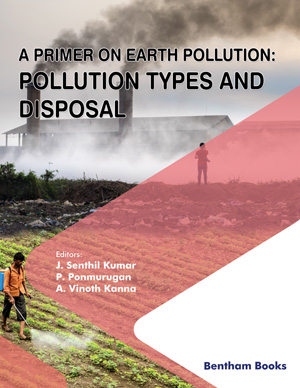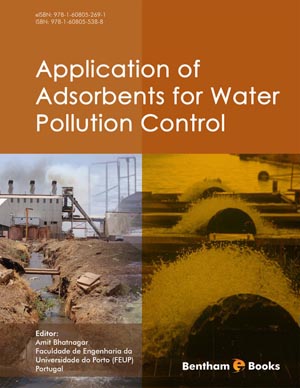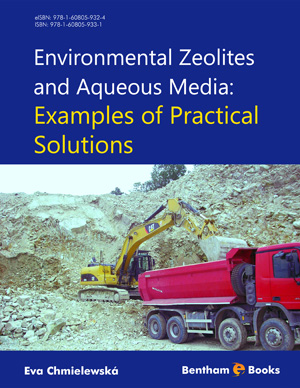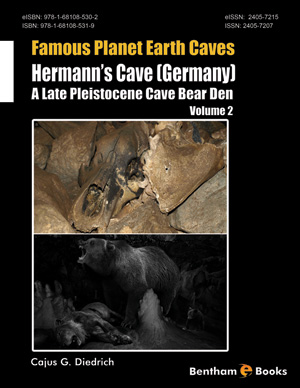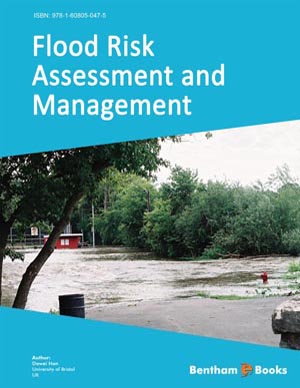Preface
Page: ii-ii (1)
Author: Daniela M. Pampanin and Magne O. Sydnes
DOI: 10.2174/9781681084275117010002
List of Contributors
Page: iii-iii (1)
Author: Daniela M. Pampanin and Magne O. Sydnes
DOI: 10.2174/9781681084275117010003
Introduction to Petrogenic Polycyclic Aromatic Hydrocarbons (PAHs) in the Aquatic Environment
Page: 3-17 (15)
Author: Daniela M. Pampanin
DOI: 10.2174/9781681084275117010004
PDF Price: $15
Abstract
This chapter serves as an introduction to the book. It contains key points and background information that will be followed up and expanded in the coming chapters. Polycyclic aromatic hydrocarbons (PAHs) are a constituent of crude oil and PAHs from petroleum are called petrogenic PAHs. This book focuses on petrogenic PAHs and research results related to them, including sources of contamination in the aquatic environment, analytical methods utilized in order to detect and quantify their presence in various matrixes, biological effects of PAHs and their metabolites, and microbial degradation with special focus on the situation in the Arctic. The tracking of sources of petrogenic contamination is of significance and it is a focus of this book. Both current knowledge and future challenges related to petrogenic PAHs are introduced and discussed.
The Presence of Petrogenic PAHs in the Aquatic Environment, a Focus on Monitoring Studies
Page: 18-49 (32)
Author: Daniela M. Pampanin
DOI: 10.2174/9781681084275117010005
PDF Price: $15
Abstract
Due to their toxic properties and their carcinogenic potential, petrogenic PAHs are routinely monitored in environmental surveys and following accidental events such as oil spills, boat accidents, and accidental discharges. Measurements of PAH concentrations in water and sediment can give an estimation of their abundance, but this does not reveal the real environmental risk. Bioaccumulation in biota and further biological effects of these compounds on various organisms needs to be evaluated to establish the risk posed to the aquatic environment by their presence. In this chapter, monitoring activities of petrogenic PAHs in the aquatic environment are described, including specific cases as examples. Due to the increased knowledge and technological improvements in recent years, new monitoring strategies are also proposed.
Oil Spill Fingerprinting - Identification of Crude Oil Source of Contamination
Page: 50-64 (15)
Author: Magne O. Sydnes
DOI: 10.2174/9781681084275117010006
PDF Price: $15
Abstract
Source identification of oil with its thousands of compounds has always been a great challenge for analytical chemists. With the significant improvements in analytical instrumentation and work-up techniques this challenge has started to become possible to overcome. Lately, the development of new mass spectrometry techniques and the increased sensitivity of the instruments have made it possible to analyze a big fraction of compounds found in oil in one single analysis. The analytical field conducting oil fingerprinting is now commonly referred to as petroleomics. The main focus of this chapter is directed towards how analyses are used in environmental investigations at present and how the technology can be used in the future for oil spill forensics.
Carcinogenicity of Petrogenic PAHs
Page: 65-110 (46)
Author: Jeremie Le Goff
DOI: 10.2174/9781681084275117010007
PDF Price: $15
Abstract
The carcinogenicity associated with PAH contamination in the aquatic environment has been a topic of prime importance since neoplasia was described in fish living in multi-sources contaminated areas, 50 years ago. Since then, a whole array of studies were conducted in order to better characterize the fate of PAHs, their bioavailability for biota and their effects in term of neoplastic lesions. Genotoxicity assessment is at the heart of the matter, as benzo[a]pyrene, the leader of PAHs, is described as ubiquitous genotoxic and carcinogenic compound, acting in particular by the occurrence of reactive diol metabolite that forms DNA adducts. The causal relationship between exposure to PAHs and occurrence of neoplasia in organisms involves to explore the biological plausibility of the association. Biomarkers of genotoxicity/mutagenicity are a central part of tools that measure the biological plausibility. DNA adducts and DNA strand breaks are lesions that can be advantageously used in sentinel organisms.
PAH Metabolites in Fish and Invertebrates: Analysis and Endocrine Disruptive Potential
Page: 111-134 (24)
Author: Denise Fernandes, Anna Marqueno, Cinta Porte and Montserrat Sole
DOI: 10.2174/9781681084275117010008
PDF Price: $15
Abstract
This chapter describes the metabolism of PAHs to oxidized and conjugated metabolites by both fish and invertebrates. So far, a wide range of metabolites have been described and a number of studies have alerted for the potential of phenol and quinone derivatives, as well as other reactive intermediates, to exert toxicity in early life stages of fish and reproductive disorders in adults. The endocrine disruptive properties have been mainly related to action at the receptor level, due to structural similarities of PAH and their metabolites with natural hormones, and also to interaction with key steroidogenic enzymes, which are present in vertebrate and invertebrate groups. The fast development of new analytical techniques, based on the use of high resolution mass spectrometry, will lead in the near future to the detection of a wider range of oxidized PAHs in abiotic matrices (i.e. water, sediment) and hopefully in biota, bringing along new research challenges.
Synthesis of Environmental Relevant Metabolites
Page: 135-204 (70)
Author: Emil Lindback and Magne O. Sydnes
DOI: 10.2174/9781681084275117010009
PDF Price: $15
Abstract
Polycyclic aromatic hydrocarbons are metabolized in vivo resulting in the formation a range of oxidized products – metabolites. The metabolites generated are more water soluable and therefore easier to excrete from the system, but these compounds are also more toxic for the organism. A range of PAH metabolites have been synthesized and used in order to study their toxicity and further faith in vivo. Different synthetic strategies have been used in order to prepare the metabolites. Herein, the synthetic strategies utilized for the formation of environmental relevant metabolites of naphthalene, acenaphthene, fluorine, phenanthrene, and chrysene, the PAHs found with the highest concentration in crude oil, are described in detail.
Microbial Degradation in the Aquatic Environment
Page: 205-232 (28)
Author: Andrea Bagi
DOI: 10.2174/9781681084275117010010
PDF Price: $15
Abstract
Considering their recalcitrance and toxicity, understanding how PAHs are removed from the marine environment is essential in order to maintain healthy and functional ecosystems. This chapter discusses the major advances in knowledge in the field of polycyclic aromatic hydrocarbon (PAH) biodegradation regarding key players, degradation mechanisms, genetic background, environmental factors influencing biodegradation and the role of interaction among microbial community members. Microbial degradation, or biodegradation, is the natural mechanism by which PAHs are channeled back into the marine carbon cycle and transformed into harmless material. The key players in this process are specialized bacteria, which developed strategies to utilize PAH as carbon and energy source. The rate of biodegradation is one of the major concerns in terms of bioremediation efforts. Factors influencing the rate at which PAHs are converted include temperature, oxygen concentration, availability of nutrients, type and bioavailability of PAHs, and the level of adaptation of the local microbial community.
Subject Index
Page: 233-236 (4)
Author: Daniela M. Pampanin and Magne O. Sydnes
DOI: 10.2174/9781681084275117010011
Introduction
Although a lot is known about the influence of Polycyclic Aromatic Hydrocarbons (PAHs) on the marine environment, there are still many unanswered questions. Petrogenic Polycyclic Aromatic Hydrocarbons in the Aquatic Environment is a monograph that sums up basic knowledge about this topic while highlighting current research practices useful in studying the aquatic environment. It starts with an introduction to effect of PAH in the marine environment. It then proceeds to provide information on techniques to monitor PAH levels and investigate the affected environment in order to control the subsequent negative effects. Chapters also detail the carcinogenic and endocrine effects of PAHs on fish as well as the degradation of PAHs by microorganisms. This monograph is a useful reference for environmental science students and professionals learning about the role of PAH in the marine environment.



